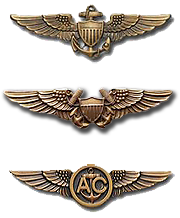VP-205 in Trinidad - 1943

VP-205 was a wonderful Navy squadron in Trinidad in 1943. Its mission was anti-submarine patrol. In VP-205 we rode herd on tremendous convoys of tankers proceeding from the refineries of Curacao and Aruba with their vital loads of aviation gasoline for the 8th Air Force in England. We also flew up and down the northeast coast of South America protecting the dim little freighters that hugged the coastline as they carried the bauxite ore which was needed so badly at home for the aluminum it contained. And of course there were regular search patrols thrusting hundreds of miles northeast into the Atlantic toward the bases from whence came the Nazi U-boats. In 1943 there were no nuclear submarines, and submarines —both theirs and ours — had to come up to the surface ever few hours to recharge their batteries and replenish their air. It was always hoped that out in the mid reaches of the Atlantic they would be tempted to run on the surface and that we would find them there when they were surfaced and vulnerable. Sometimes we did!
A fine group of men flew and manned VP-205’s aircraft, those PBM-5 ‘Sugars’. The skipper was A. S. "Art" Hill. Hill was a splendid skipper. He was tall and carried himself erectly and was ,as he appeared to be, every inch an officer. A few people didn’t like him They mistook his officer-like bearing with the qualities associated with a stuffed shirt. Nothing could have been further from the truth. Personally, I liked him fine. I have always remembered one notable terse order he once promulgated. The subject was aerological weather in the Caribbean, and the full text of the order I can quote from memory. It was, "There is no unflyable weather in the Caribbean" But he believed it and set a good example. For instance, one night he led three of our ponderous sea planes in a V-section take-off at two o’clock in the morning. It was pitch black, right at the height of a torrential tropical downpour, and to add excitement on that particular occasion our planes were loaded down with torpedoes, which we didn’t usually carry.
Big Harry was a character. He came back one night with 199 holes in his plane but no one was injured. I recall we gave him a pretty bad time speculating as to why the number of holes did not come out even — after all, if they came in one side of the airplane and out the other, it should have been that way. We finally concluded that one of the bullets had fragmented. Harry thought, rather wryly that perhaps he should have stuck around and collected six more holes to make the number equal the squadron designator number.
Then there was Santure and his knife wound. Santure had been an undertaker in civilian life and, though he was well liked by us all, we made comments and shared a bit of an uneasy feeling that came with having your own trained undertaker as a squadron mate. One night a bunch of the boys were whooping it up and had adopted a rather harmless pastime, or so it seemed at the time, of throwing their jungle knives at the Betty Grable pin-up pictures on the wall. It was inevitable that someone’s knife should go astray, and sure enough one wild throw and an eight inch blade went clear through the fleshy part of Santure’s leg. He was good as new in a few days.
Late one afternoon a submarine had been attacked by one of our planes and crippled but not sunk. Its steering gear had jammed and it was cruising aimlessly in a big circle, apparently unable to submerge. The plane that had made the attack had exhausted its bomb load and was impotent. The pilot, of course, had radioed the base during the initial contact and as fast as aircraft could be diverted from other missions, or armed and launched from the base, they flew to the scene. By about 10 o’clock that night there was also a blimp present. We were all flying at different altitudes to try to avoid midair collisions. There are no navigational lights turned on in wartime. The OTC (Officer in Tactical Command) had briefed us to release flares simultaneously on his command, and when his command was executed the entire ocean was illuminated over an area of a couple of thousand square miles. The yellow-white flares drifted slowly down, trailing smoke. It was a spectacular sight, and during the few minutes that the illumination persisted, one of the planes sighted the sub close at hand and delivered another attack. The sub sank. The proof was in the eighty survivors that were brought back to the base a couple of days later by a destroyer that had been summoned to the area.
Aviators’ tactics for anti-submarine warfare in 1943 were direct, simple and brutal. They involved sighting the submarine, getting to him before he submerged, flying very low directly overhead, and releasing a string of depth charges spaced out about a hundred feet apart. When the Germans figured out what these tactics were, they countered by installing six machine guns in the armored conning towers of their submarines. Their tactics, in turn, were to throw up a cone of bullets through which the plane would have to fly to successfully press home its attack It was a battle of guts. The encounter almost always resulted in a Pyretic Victory. Big Ham, with his 199 holes, gave us our first insight. We finally were sure beyond all reasonable doubt Majuski and his crew were on patrol one day when he reported on the radio that he had sighted a submarine and was closing in. After a few tense minutes of silence he reported he had made his attack with good results. Just a few seconds later, he reported … "FIRE, FIRE." We never saw that plane again, or the submarine. And there was further evidence...I was flying a real heavy load one day with a double crew. The extra crew was aboard for transportation to an advanced base in British Guinea. We carried a normal bomb load, and full load of gas and, to top it off, about 2000 extra pounds of mail and freight. My orders were to conduct a normal patrol, land at the advanced base and discharge the extra crew, mail and freight. Under these circumstances I found myself early one afternoon hundreds of miles at sea. One of my sharp-eyed crew spotted an orange dot glistening sharply in the distance against a perfectly blue sea. I headed over to the area, dropped down to fifty feet off the deck and flew over what was unmistakably a United States life raft. We counted four tanned and seemingly quite healthy men aboard. One of the men stood up in the raft as we flew over and clasped his hands over his head in the traditional Anglo-Saxon gesture of victory. We took careful sun sights to fix our position and radioed all the information to base. We got assurance by radio that a destroyer was not many hours away and then we departed the scene after dropping a liberal supply of water and tinned food which we saw the men retrieve. When I returned to the home base a couple of days later I got a big ribbing for rendering aid and comfort to the enemy. The four men had been picked up and they turned out to be Nazis. One was a U-boat skipper and the other three were members of his crew. They had been on the conning tower of a submarine much further south off the coast of Brazil when they were attacked by a plane of one of our sister squadrons. The Nazi skipper said the attacking plane dropped its depth charges and sank the submarine. The subs machine guns in turn splattered the plane and blew it up overhead. A life raft spilled out of the aircraft and landed at the feet of the Germans as their submarine sank out from under them. From all this evidence our whole squadron knew what to expect. The Germans were shooting back. The whole grim lesson was driven home by a funeral held for twenty-eight of our missing squadron mates, one full fourth of our squadron. The absence of bodies made us feel a sense of loss even more acutely. The sea had claimed them. Maybe it was fitting.
I had a superb crew. Mike Carbonero was the best plane captain a patrol plane commander could ask for. Tom, my co-pilot, was a positive gem —phlegmatic, personable and a hell of a good aviator. Chief Crosby was a good navigator. The rest of the boys were just as sharp in their specialties. It was the kind of crew a man wanted to be with him when he headed into combat. We flew mostly at night because ours was one of the first squadrons in that area to install and use the new invention called radar.
One particular night we were briefed for a patrol mission. We were to go out northeast of Trinidad toward the Azores, out toward that open ocean stretch where it was presumed the German U- Boat skippers felt secure. The briefing officer carefully pointed out to us the position of convoys and all individual friendly ships, and we carefully noted their positions and plotted their respective courses and speeds on the charts we were to carry in the plane. The gist of the briefing was that after we cleared the immediate vicinity of the base there would be no friendly shipping whatsoever within a couple hundred miles of our assigned area. Thus anything we detected could be presumed to be hostile. It was a beautiful night with an almost completely full moon hanging in the East. The sky was dotted with scattered cumulus clouds drifting as usual with their bases at about 2500 feet and their tops at about 4000 feet. The gentle northeasterly trades were right on the nose as we headed out. We had taken off just before sunset. About five hours after takeoff, there was a sudden shout by Ed, the radar operator. He said he thought he had a target at the extreme range of his scope. In a few minutes, shifting back and forth on the radar scales, he established beyond doubt that there was a radar target about forty miles away and almost dead ahead of us. It had to be an enemy submarine. Torn and I talked briefly and decided how we would come to grips with our target. We would fly north and climb well above the clouds until the target was just about east of us, where it would be silhouetted in the moonlight as we closed in. We would throttle back and glide in so we would minimize the engine roar, and hope that the gentle trade winds would carry away the telltale sound of our engines. We would glide in upwind and down moon until we were almost over the target, dive down and let go. I ordered the crew to battle stations and climbed to 8000 feet. When the target lined up in the reflection path of the moon we turned directly toward it and throttled back to descend at about 500 feet per minute and 160 knots. We checked off arming the weapons, set the intervalometer, opened the bomb bay doors and bridged the electrical circuits. We kept gliding in, watching the blip come closer and closer on our radar scope. The cloud cover had increased so that in the final stages of the descent we caught only occasional glimpses of the ocean surface below. Just as we entered the tops of the clouds we lost the target in the sea return clutter area, right at the center of the radar scope. This was the time! We racked the plane over and dove. The plane was red-lined at 203 knots but I noted 230 and still climbing as we broke out of the lower edge of the clouds and the gray mist stopped streaming by. The first split second observation we had after breaking out was that of many amber colored lights. Tom shouted, "The SOB heard us coming and they’re shooting!" We were in a perfect position for attack. My hands were on the yoke and one thumb was on the pickle. I needed only to press that pickle to release a full load of torpex depth charges. Like Tom, I believed those lights were tracer ammunition. But something kept me from releasing those bombs. Instead, Tom and I horsed back on the yoke and pulled the whining plane out. We rolled to the left so that we could look back. And then in a flood of emotion and awe we saw a great Red Cross dramatically illuminated against the vast white side of a sizable ship. The ship had flood light projecting from its deck down and inward to illuminate its sides. She was lighted up like a Christmas tree. We circled her several times and read her name. She was the GRIPSHOLM. I found out later she had a load of 1700 refugees aboard her from the European War Zones. We left the scene, shaken at the crime that had almost been committed, with us as its unwilling agents, and finished our patrol without further event. After landing we went through debriefing procedures noisily and belligerently with the briefing officer and, of course, it was no one’s fault at all … just a "breakdown in communications." But of such stuff is tragedy born. It all happened five decades ago, but even now when I look at a starry sky and reflect on the order on the universe that keeps planets moving so predictably, peacefully and silently, I wonder what or Who stayed my hand that unforgettable night.
Note: The above article was written thirty years ago by Captain Robert Trauger, USN (Ret), who sent it to Trinidad for the recent reunion of WWII veterans there.
Send questions, comments or suggestions regarding this website to: vp45assoc@vp45association.org
Copyright © 2005 PATRON FOUR FIVE ASSOCIATION


